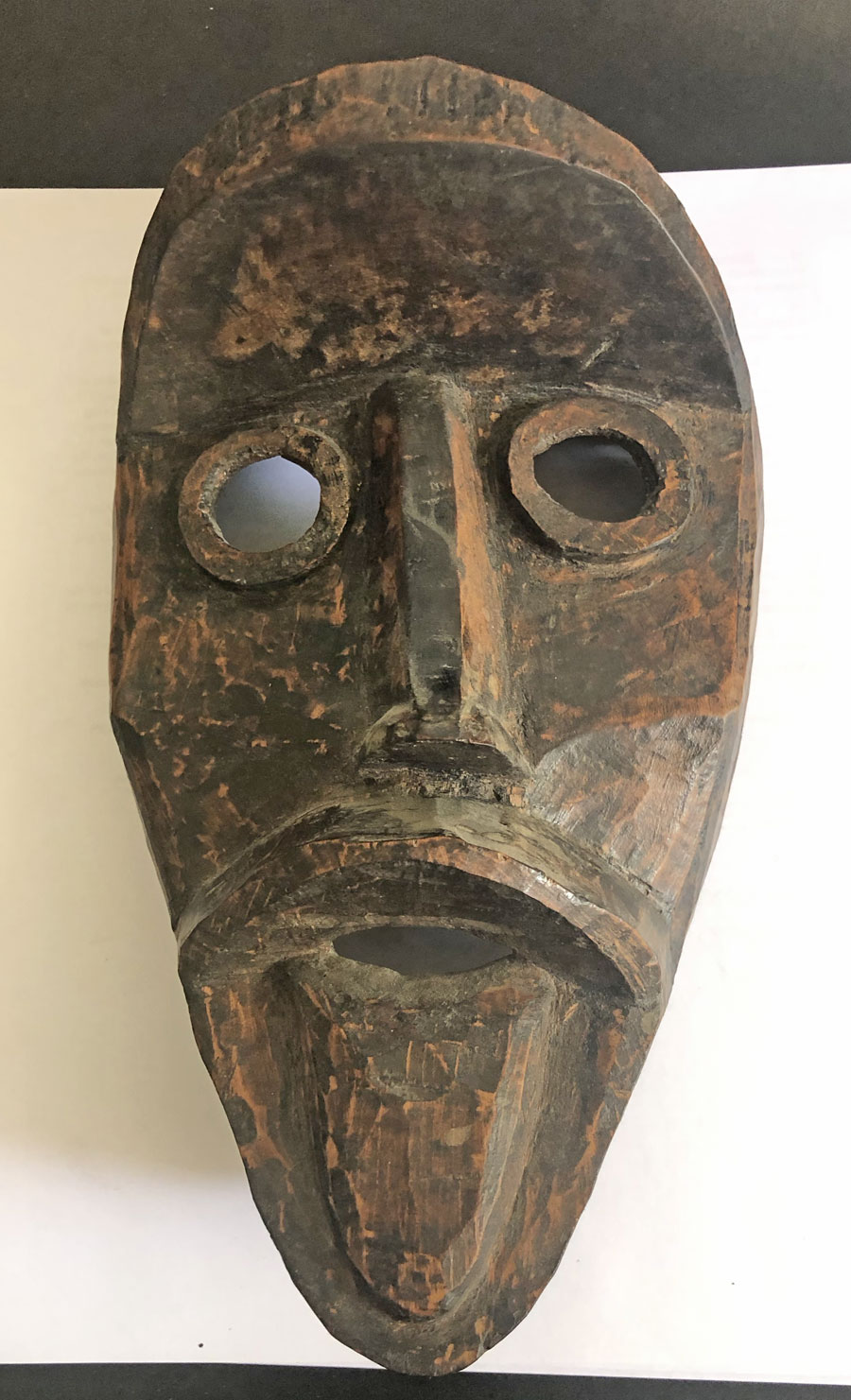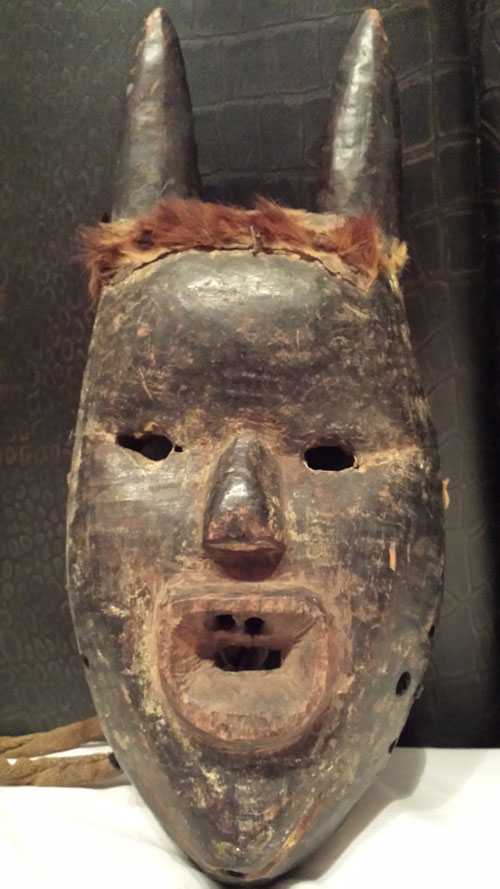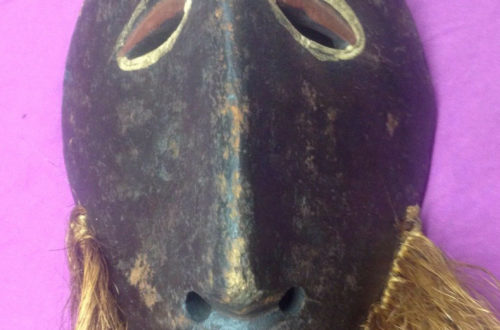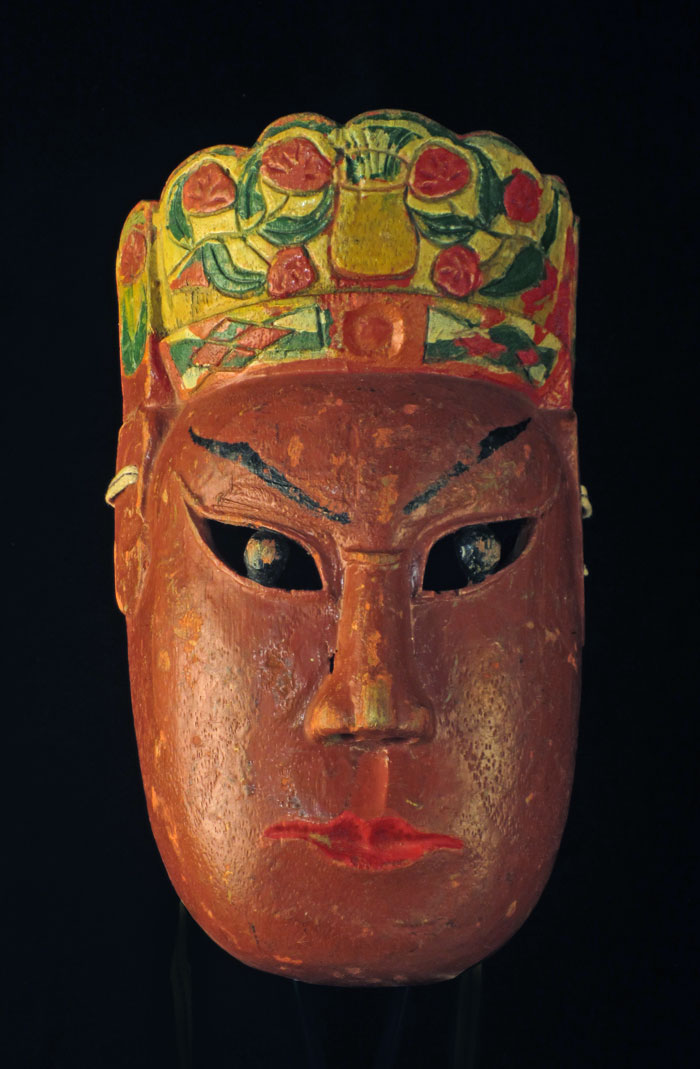 Q: This mask was given to my mother, Mary Ellen Goodman, PhD, by one of her professors, the famous anthropologist Clyde Kluckhohn, probably in the late 1930s. I’ve always loved it but don’t know anything about it. Images are shot against an 8.5×11 inch paper for scale. Lanny, 1571
Q: This mask was given to my mother, Mary Ellen Goodman, PhD, by one of her professors, the famous anthropologist Clyde Kluckhohn, probably in the late 1930s. I’ve always loved it but don’t know anything about it. Images are shot against an 8.5×11 inch paper for scale. Lanny, 1571
A: This is probably an old We Guere Mask from the people of Cote d’Ivoire. If it was found in a thrift shop or on eBay, I would dismiss it as a cheap tourist mask. But because of the family provenance, I think we should look at it more closely.
The size and wood seems right. None of the surfaces are artificially aged. The carving and holes are made with crude tools. It could be from a remote area, and be very old. Let’s see if an experienced collector can help confirm the mask’s authenticity.
This type of mask was carved and worn to terrify their enemy when at war. The Guere share many aspects of culture with the neighboring Dan tribe. They created masks that were used during festivities, funerals, rituals, wars, and that look rather scary.
The art of Guere people is stylistically connected and both groups are often collectively referred to as We, meaning “men who easily forgive.” Like the Dan, the We use a wide variety of masquerades, which hold important regulatory position within their small, egalitarian communities. Masks are owned by families and used by individual lineage members in contexts of social control, boy’s circumcision camps, and entertainment. A







5 Comments
Lanny
thank you…i look forward to any additional thoughts.
ZF
I’m not an expert, but I think the mask is actually Dan, and is what is called a Bugle mask. As mentioned above the wood and surface look ok, and the squarish holes are a good sign of age and authenticity, as they’re difficult to make and not often seen on fakes.
david gao
the square holes isn’t rare anymore on fakes. I have seen them on well executed fakes. I’m leaning towards a dan but two areas don’t seem right. Shouldn’t the eye contour area use metal? and the front / back patina is too uniform. I have my doubt.
Chris
might be a piece which has never been actually worn…or it received a kind of antiquing job already back then, as already back then, people knew that visitors from the “modern” world were interested in some artifacts while not in others.
Eric
It is Dan, authentic and with some age but quite rough.